Cost to Get A Pilot License
When looking to become a pilot, one of the first areas you are likely to want to understand is in regard to the pilot license cost, and ultimately how much training may cost you. Paying for flight time required, plus the one-on-one instruction with a Certified Flight Instructor can all add up; however, so do the rewards with not only a high paying career, but also unparalleled office views and the ability to travel the country or even the world.
As with most things, the cost can depend. The pilot license cost you will pay is based on the type(s) of pilot license(s) you are looking to obtain. For instance, a private pilot license will cost less than a commercial pilot license, as not only are the flight hour requirements significantly lower, but a Private Pilot License is a preliminary step for almost all pilots on their way to getting their Commercial License.
The type of aircraft will also play a factor in the pilot license costs you incur. Here, we are focusing on fixed wing pilot training costs. Those interested in becoming helicopter or drone pilots would have different pilot license costs. Similarly, the ‘Category’ or ‘Class’ of aircraft would impact the cost structure, for instance becoming rated in a Multi Engine plane would cost more than training only in a Single Engine plane.
However, acknowledging these caveats and limitations, to give a rough estimation for the cost of each pilot license the following will help you understand the approximate costs
| Pilot License | Approximate Cost | ||
|---|---|---|---|
| Private Pilot License | $10,000-$20,000 | ||
| Instrument Rating | $10,000-$15,000 | ||
| Commercial Pilot License | $25,000-$35,000 | ||
| Commercial Multi Engine Add On | $5,000-$10,000 | ||
| Certified Flight Instructor | $10,000-$15,000 | ||
| Certified Flight Instructor Instrument | $5,000-$10,000 | ||
| Certified Flight Instructor Multi Engine | $5,000-$10,000 | ||
Types of Costs in Getting a Pilot License
As shown in the prior table and the ranges displayed, the cost to get a pilot’s license can vary based on a number of factors, but the most notable is the number of flight hours that are required. Whether these flight hours are required based on the course, such as differing Part 61 or 141 requirements, or simply needing additional flight time to build proficiency in the plane, flight time will be the main driver of the cost to get a pilot’s license.
However, beyond flight time here are some other costs to consider when calculating your total cost in becoming the pilot you are aiming to be.

Simulator and Briefing Time
Aside from the flight time and the direct one-on-one instruction received while flying, aspiring pilots will also learn a lot on the ground in simulated flight and briefings on the required theoretical knowledge and understanding. While the costs of plane maintenance are avoided, the benefits of direct, personalized instruction remain.
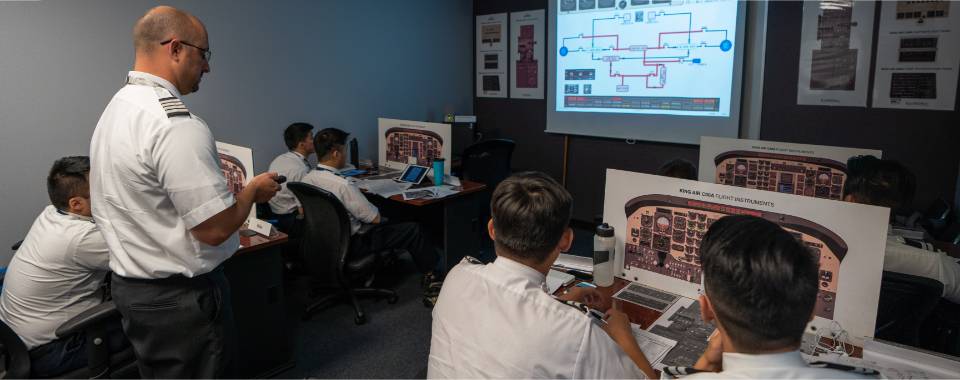
Ground School
Being a pilot isn’t just a case of learning how to control a plane, but also understanding all of the required theoretical knowledge, aviation regulations and much more. This material may be taught in a digital format through self-study with books, or a dedicated in-person ground school similar to a college setting. The costs, and also benefits, or each of these will differ.
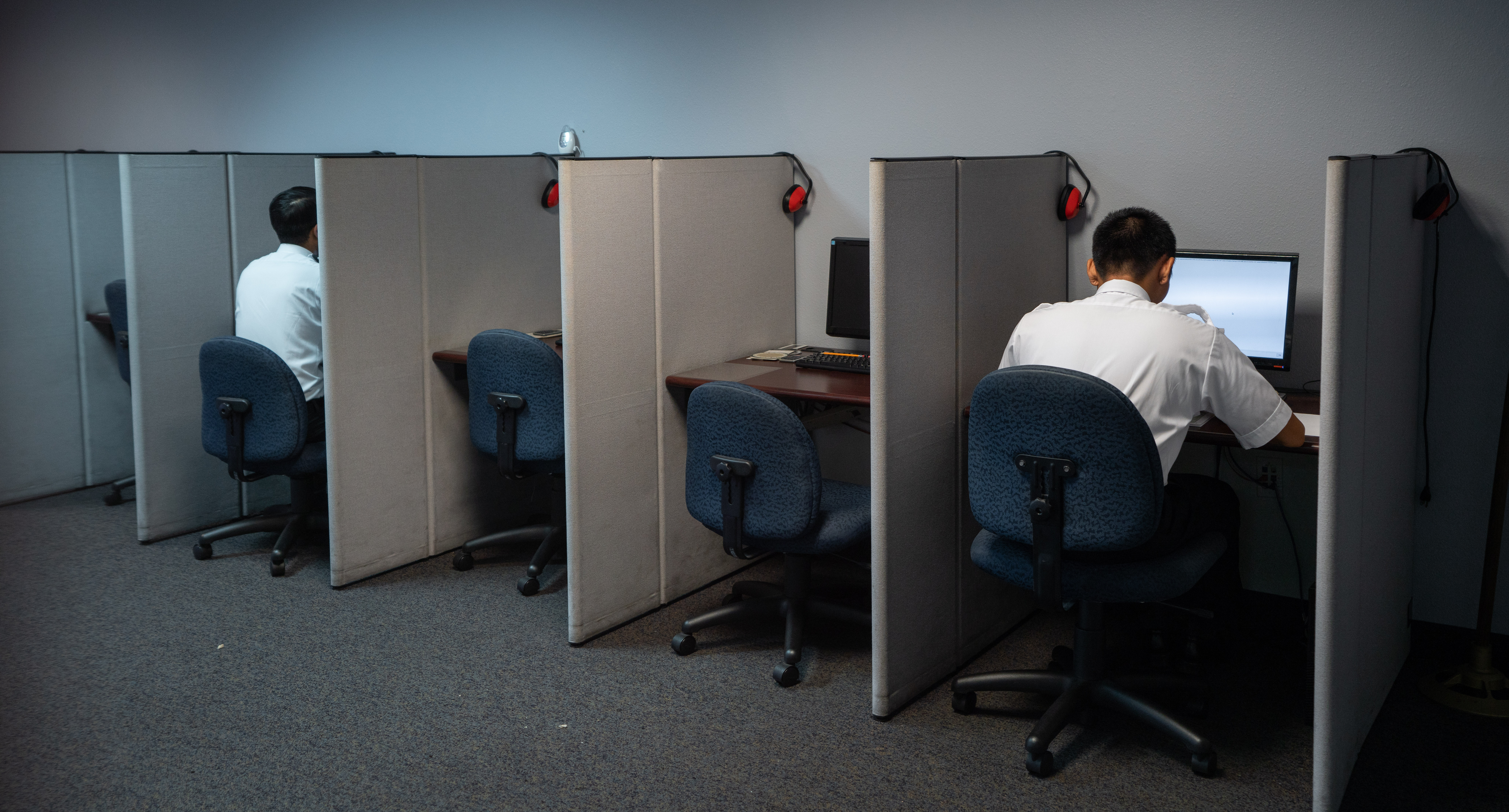
FAA Knowledge Tests
After completing a ground school and receiving endorsement, a knowledge test is required prior to the flight test. This test is a multiple-choice test completed at authorized locations and at the time of writing, test costs are approximately $160 for each rating.
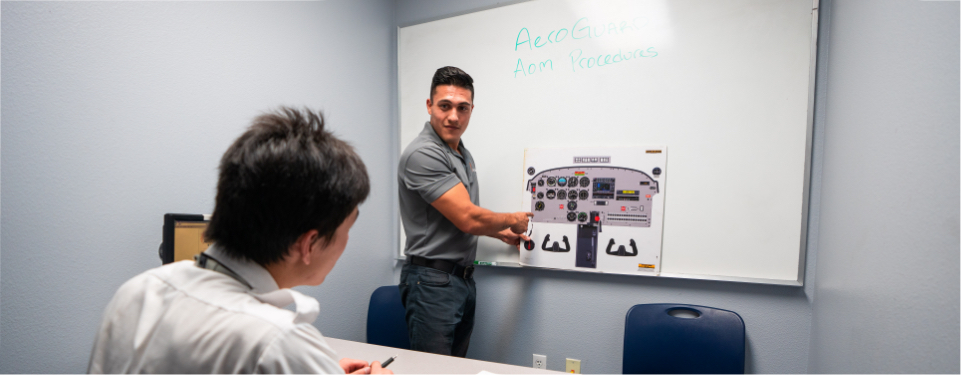
Check Ride Fees
Actually becoming a pilot and getting the pilot’s license requires a flight with an authorized FAA examiner. These examiners charge for their time and qualifications, which depending on the rating may be upwards of $1000 just for their time to take the test.
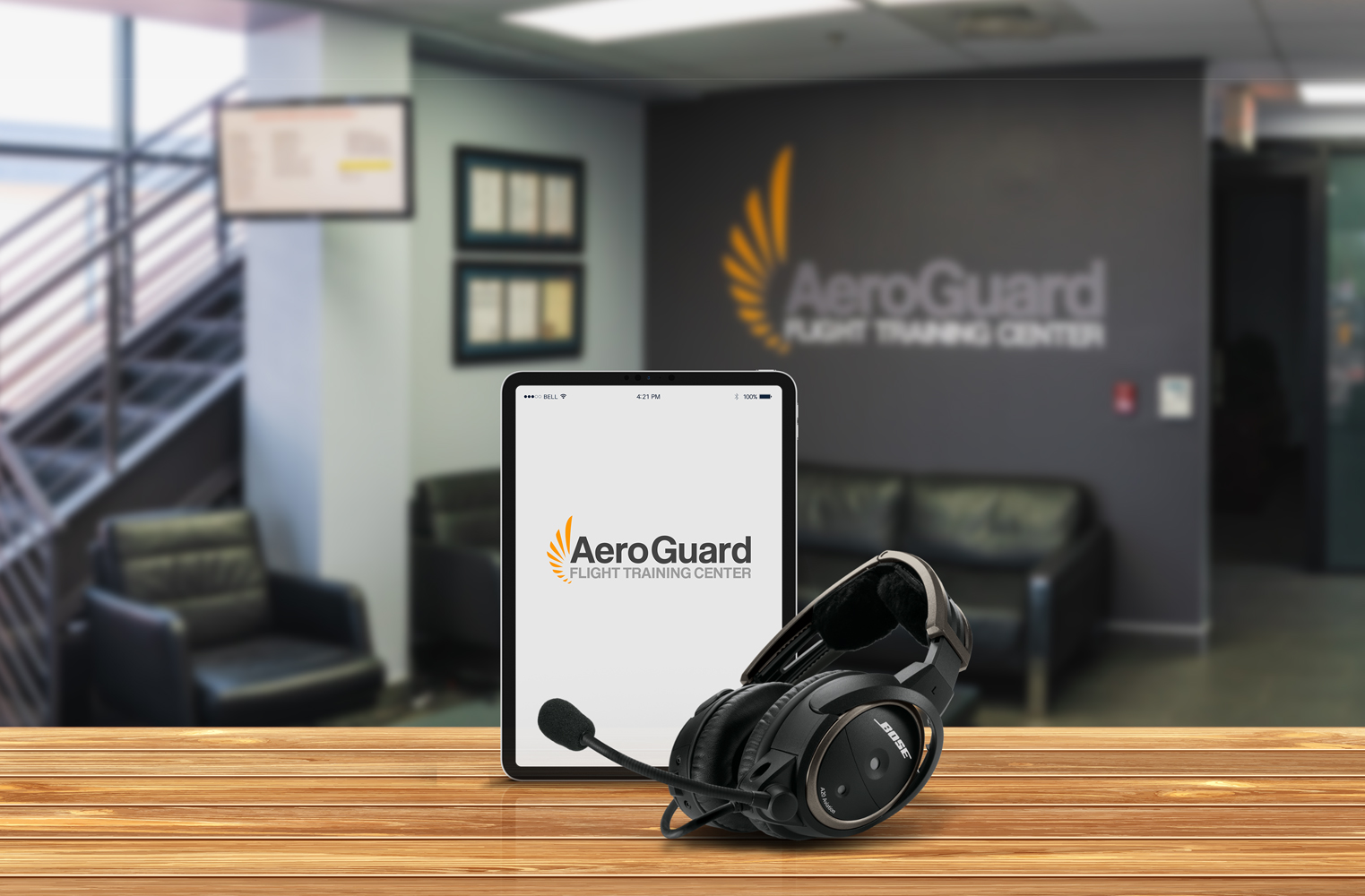
Materials and Supplies
Finally, pilots will also need other supplies during their training, also ranging in cost. From simple tools and calculators, to more expensive aviation headsets and iPads for flight planning, these can all add to the true cost of getting a pilot license.
Pilot Training Costs at ОЮВлВТВЧ
Given the range of factors and inputs, it is hard to give a definitive price of the cost to become a pilot, even at ОЮВлВТВЧ. Given the possible range of experience and background each aspiring pilot may have, it is best to talk to an Enrollment Advisor and discuss your options.
However, we do offer a range of programs offering different pricing structures.
-
Pilot Pathway Program – ОЮВлВТВЧ’s Pilot Pathway Program is the way to become a professional pilot, taking students from zero or some experience, through the remainder of their ratings, to becoming a working CFI building their 1500 hours, and then moving on to the commercial airlines. In this program we offer transparent pricing from start to end, explaining every cost including all materials and supplies, and all first-time tests and checkride fees – no additional hidden fees. With unlimited simulator time, student support and workshops, the ability to observe ground school, back seat flights and more – this is our guarantee for the instruction and support you will receive.
-
Degree Program Flight Training – Students can also complete their flight training as part of a degree program, such as within our Arizona State University partnership. In these programs, the pilot license cost is incorporated into a student’s college tuition, with additional support from FAFSA Federal Financial Aid and student loans.
How Flight Schools Quote Costs
Most flight schools quote costs in a way to make themselves sound cheaper to students, who then enroll and subsequently come to understand the true costs of enrollment after the fact. There are typically a couple of ways they do this to be aware of.
Program Only Pricing
Schools may quote using only the cost of their program and training – avoiding telling students about the other pilot license costs they may incur. For example, quoting the cost of the flight training, but then excluding the cost of Checkrides Fees and tests – which can add $7,000 or more for a full program student. Flight School’s rationale for this is that those fees are charged by third parties, but they are still students costs to getting a pilot license.
FAA Minimum Quoting
As noted above, the biggest impact on cost to a student is the number of flight hours required. The F.A.A. maintains minimum hours for each rating, for instance the minimum hours necessary to become a private pilot is 35 hours.. However, the national average to become a private pilot is between 55 and 70 hours – meaning the real price to students may be double what they originally expected. Many flight schools quote using the F.A.A. minimum number of hours (for instance 35 flight hours in this example), as it is theoretically possible for a student, however in many cases it is not realistic and should not be a students expectation to help them budget and plan their expenses.
In this graphic, we aim to explain these different pricing structures, and how the true cost to a student may be different to the price they are originally given. At ОЮВлВТВЧ, we aim to set realistic pricing expectations (as best as possible) to help our student’s plan for their expenses, including having an all-inclusive program available. At other schools, the true price can vary greatly.
To avoid this issue in understanding your cost to get a pilot license, it’s important to ask the right questions, understand the costs you will need to incur and verify if they are included in the quote or not. Compare the estimated hours with the average number of hours students have previously needed to become a pilot at that rating and understand your costs if you go above the quoted amount.
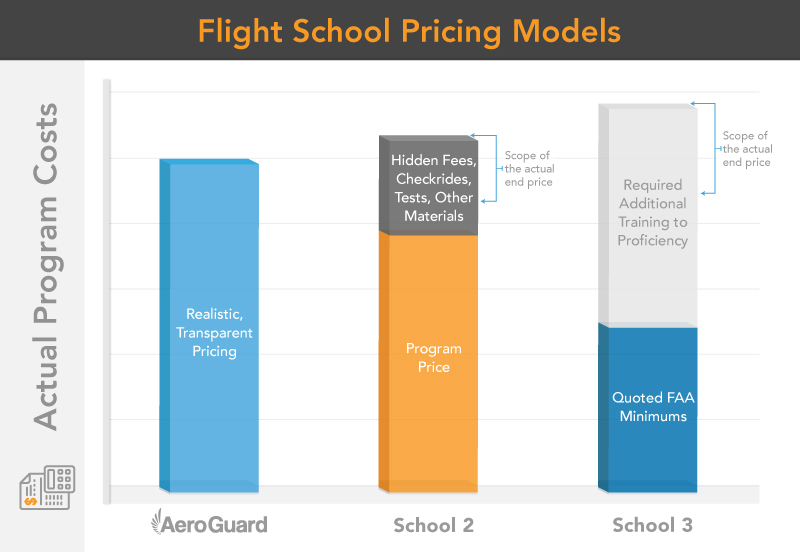
At ОЮВлВТВЧ, we don’t expect to be the cheapest flight school, and with our high-quality curriculum, safety first approach and award-winning maintenance, we don’t aim to be. The investment that you make in your future career, skills and safety are a worthy investment. We also aim to quote each and every student with realistic and transparent pricing, so they can understand the costs they need to plan for. Through this approach, students shouldn’t need breaks in training, keeping them progressing through the course and mitigating additional financial concerns when trying to focus on their studies.
Reducing Your Costs to get a Pilot License
To reduce your pilot license costs, whether at the Private Pilot or Commercial Pilot License level, or even beyond that – the key to success is preparation, preparation, preparation. As discussed, flight time can add up, so not only is it important to get the most out of this time, but also make the most out of your time on the ground.
Becoming a pilot is more heavily focused on theoretical knowledge and understanding than most people think, and not just a case of learning how to operate the plane. Therefore, having a firm grasp on this knowledge through self-studying or formal ground school will reduce the costs to get a pilot license by reducing the need for re-train flights or multiple attempts on written exams and checkrides.
Similarly, leveraging the tools available to you and preparing ahead of time for each flight will reinforce these habits and checklists until they become second nature. Preparing for flights in a simulator can help you master the skills necessary, as can studying the lesson notes of each lesson before you take it.
Time is Money and being prepared can help you make the most of your time.
Paying for the Cost of a Pilot License
Given these costs in obtaining a pilot license, an important question for many students will be how they will pay for it. Fortunately, there are a few options available.
-
Private Student Loans – ОЮВлВТВЧ has partnered with three lender partners who can help students fund the cost of their training. Qualifying students can fund their training costs, as well as living costs in the program, paying back their loans once they are training as a CFI while building hours, and while employed at the commercial airlines. Given the pilot salary upon completion, students can understand the return on their investment in order to pay off these loans after graduation.
-
Federal Financial Aid – For students training within a college degree, Federal Financial Aid (FAFSA) becomes an available option. This can help students to qualify for a greater amount, while obtaining their college degree, although it can slow down their pace of training into a 4 year timeframe.
-
Personal Savings – While this may not be possible for most, pulling from savings, refinancing other assets, or the support of friends and family can help to pay for the cost to get a pilot license. At ОЮВлВТВЧ, we have many students following their dream to fly as a second career, with savings from their first to support it.
Another approach for students is to fund their training incrementally, while working either at the same time, or taking breaks between the two. This is a fine approach, but considering the pilot shortage, airline seniority, and the cost of any re-training needed, this can become economically inefficient by slowing down training and requiring more flight time by training less often.
Summary: Pilot License Cost
To conclude, the cost to get a pilot license depends on many factors, from the license in question, to the preparation of the student, as well as the flight school itself. However, students would be well advised to consider all of the costs in obtaining their license and understanding their realistic costs and how they aim to pay for it prior to starting training, ensuring there are no unwelcome surprises along the way.
If you’re ready to start this journey, or better understand the costs involved in training given your background and experience, talk to an Enrollment Advisor today and receive your customized quote.

